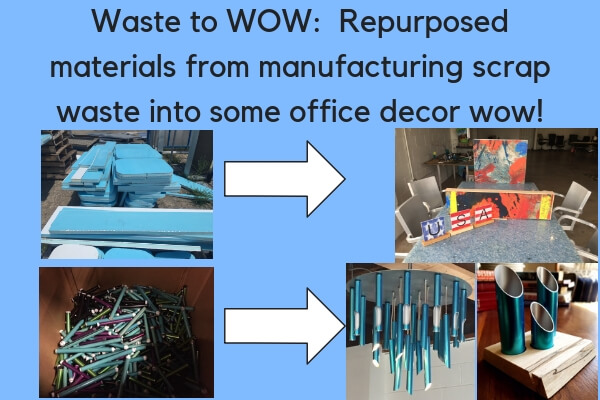Repurposed Materials: A Sustainable Approach to Creativity
When it comes to being eco-friendly and sustainable, repurposing materials is an excellent way to reduce waste and give new life to old items. Repurposed materials refer to objects that have been transformed or adapted from their original use into something entirely different. This approach not only reduces landfill waste but also encourages creativity and resourcefulness.
Benefits of Repurposing
Repurposing materials offers several benefits. Firstly, it helps to minimize the demand for new products, reducing the need for resource extraction and manufacturing processes that contribute to pollution. Secondly, repurposing promotes individual creativity by challenging us to think outside the box and find new uses for old items. It sparks innovation and encourages people to develop unique solutions to everyday problems.
Additionally, repurposing materials can also save money. Instead of buying new items, repurposing allows us to make the most of what we already have. It can be a cost-effective way to decorate our homes, create unique fashion pieces, or even build furniture.
Examples of Repurposed Materials
There are endless possibilities for repurposing materials. Old wooden pallets, for instance, can be transformed into unique furniture pieces such as coffee tables or bookshelves. Mason jars can be repurposed as stylish vases or storage containers. Vintage suitcases can become trendy bedside tables or attractive storage units.
Other examples include repurposing old clothing into quilts, turning wine bottles into beautiful candle holders, or transforming discarded car tires into planters for a garden. The only limit is your imagination!
Environmental Impact
Repurposing materials significantly reduces waste that would otherwise end up in landfills. By giving new life to old items, we can minimize the environmental impact associated with manufacturing, transportation, and disposal. It also helps to conserve natural resources and reduce energy consumption.
Furthermore, repurposing materials can inspire others to adopt more sustainable practices. When people witness the creative potential of repurposed items, they may be encouraged to think twice before throwing things away. This, in turn, can lead to a shift towards a more circular economy where resources are continuously reused and recycled.
In conclusion, repurposing materials offers numerous benefits for both individuals and the environment. It promotes creativity, reduces waste, and contributes to a more sustainable future. By embracing repurposed materials, we can all play a part in reducing our ecological footprint and fostering a culture of innovation and resourcefulness.
